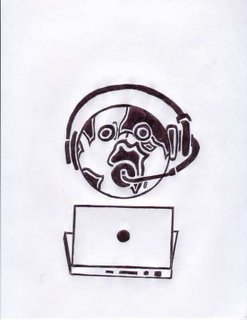
Talkin’ bout my Generation! Two years ago I had the privilege of managing an Air Force Gymnasium for an entire year. I actually held two jobs, one high-tech (Intel Corp) and one funky-tech (a stinky gymnasium).
The generation gap (sub-culture) story goes like this. On the weekends there were hoards of basketball players waiting to play full court basketball (b-ball). I know for a fact or maybe just a figment of my imagination, that I saw Hooptie Hooperdink and Basketball Jones hanging around my gym more than once.
Quick Fact: Actually, the military picks up a lot of great b-ball players out of 2 and 4 year colleges. When I say “jump” you say, “How high.” Let’s just say “Slam Dunk.”
To my utmost amazement, some of the younger basketball players in my generation (X) and older generation (Y) were wearing their shorts down around the top of their thighs (Major Sagging). Personally, I had to smile and laugh to myself as they ran down the court and pulled off a jump shot. Can you picture it? You run behind the ball carrier and he jumps into the air. Where does this motion place his sagging shorts? Those shorts are right in your face. Distasteful and disgusting as it is, the players kept on playing.
I tried to understand the trend, I really did, but I came to the conclusion that sagging basketball shorts can’t be understood. I thought to myself “who in their right mind would want another basketball player’s sweaty, nasty, boxer shorts not to mention booty at nose level? HELLO! Seems like a no brainer to me.
If a woman’s thong hanging out of her clothing is called a “whale tail,” then I imagine a basketball player’s nasty boxer shorts, must be called “Smell tail!” Thankfully, I believe this nasty trend is dying. I hope and certainly desire sagging to die a quick death. However, there are still those few individuals that want to keep the boxer-showing trend alive.
If there is one sagging individual, there is one too many. This includes whale tails ladies.
So what did I do? I used the loud speaker. “Attention in the gym, attention in the gym, if your booty is out of your shorts, you are out of my gym!” On the first call no one seemed to hear. So I walked out into the middle of the court and stopped the game. I had all ears and quite a few mouth’s flapping. Loose lips gain no ground. I said in a commanding voice, “If your booty is out of your shorts, you are out of my gym!” Unbelievably, I might have had one or two seconds of silence before a generation (Y) got in my face and claimed freedom of expression. I quickly retaliated with “I will grant you freedom of extraction.” For some reason military police love to remove people which can not comply. You’re free to express and I am free to extract. Keep the piece in your shorts and you will keep the peace.
Common decency requires one to think of others over themselves…


















